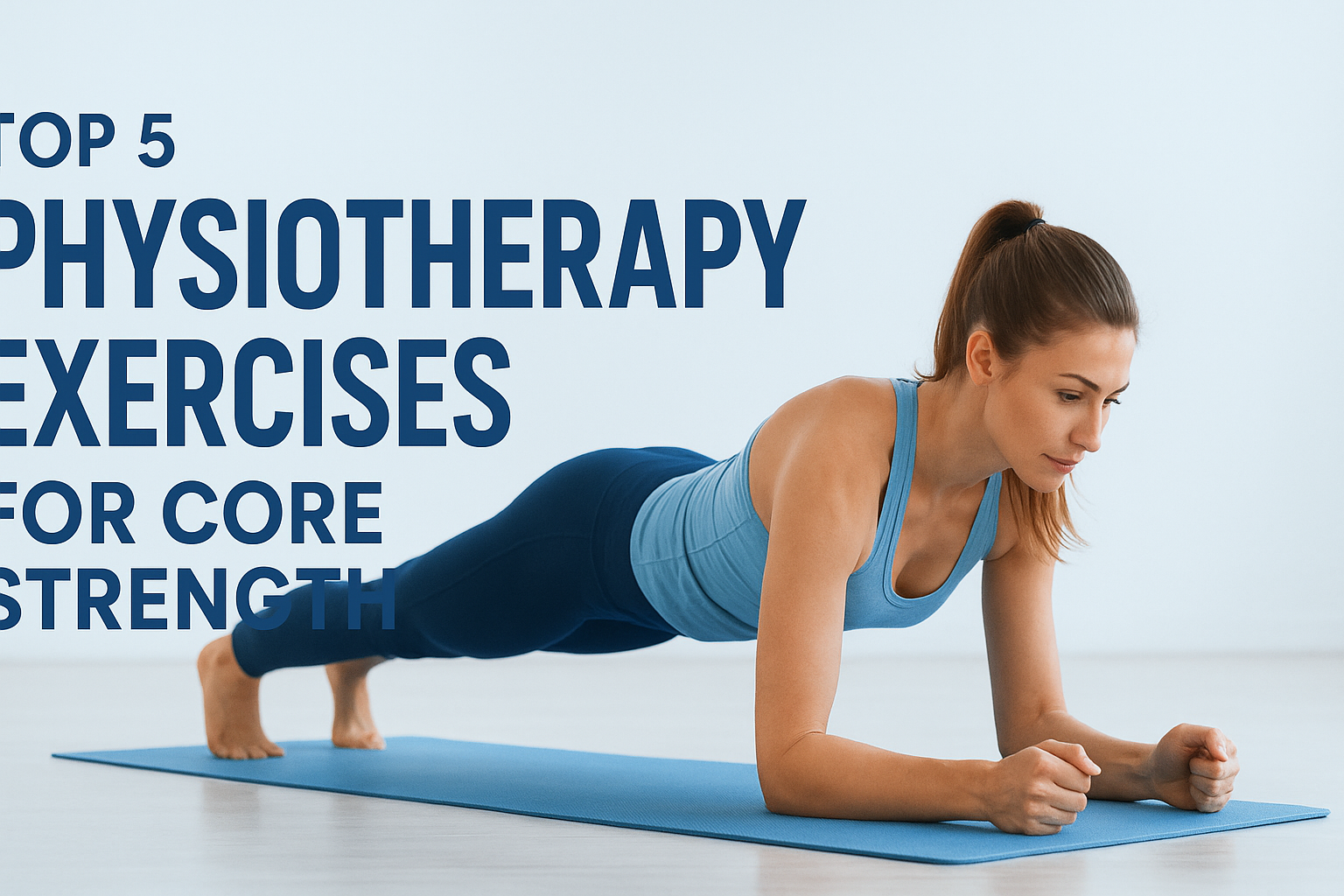Introduction: Build Your Foundation of Strength and Stability
A strong core is more than just visible abs — it’s the powerhouse that supports your spine, posture, and overall body movement. Whether you’re recovering from an injury, managing back pain, or aiming to improve fitness, physiotherapy-based core exercises offer a safe and effective way to strengthen your body from the inside out.
Physiotherapy doesn’t just focus on strength; it emphasizes alignment, control, and endurance — helping you activate deep stabilizing muscles often neglected in regular workouts.
In this guide, we’ll explore the top 5 physiotherapy exercises for core strength, their benefits, and the right way to perform them for maximum results.
Understanding the Importance of Core Strength in Physiotherapy
Your core includes more than just abdominal muscles — it encompasses the pelvis, lower back, hips, and diaphragm. These muscles work together to stabilize your body during movement and prevent injuries.
From a physiotherapist’s perspective, a strong core helps:
- Maintain spinal alignment and posture
- Reduce back and pelvic pain
- Improve athletic performance and balance
- Prevent falls and injuries in daily activities
A stable core = a strong foundation for every movement you make.
Top 5 Physiotherapy Exercises for Core Strength
These simple yet powerful exercises are recommended by physiotherapists for strengthening and stabilizing the core.
1. Pelvic Tilt (For Lower Back Support)
How to Do It:
- Lie on your back with knees bent and feet flat on the floor.
- Flatten your lower back against the mat by tightening your abdominal muscles.
- Hold for 5–10 seconds, then relax.
Benefits:
Improves posture, strengthens lower back, and reduces stiffness.
Tip: Perform 10–12 repetitions twice daily for optimal spinal support.
2. Bird-Dog (For Stability and Coordination)
How to Do It:
- Start on hands and knees in a tabletop position.
- Extend your right arm forward and left leg backward simultaneously.
- Hold for 3–5 seconds, then switch sides.
Benefits:
Builds balance, improves coordination, and engages deep stabilizing muscles.
Pro Tip: Keep your hips level — avoid arching your back.
3. Bridge Pose (For Glutes and Core Activation)
How to Do It:
- Lie on your back with knees bent.
- Lift your hips upward while keeping your shoulders on the floor.
- Hold for 5–8 seconds, then lower slowly.
Benefits:
Strengthens glutes, lower back, and core while improving pelvic stability.
Add a resistance band above your knees for extra intensity.
4. Dead Bug (For Core Control and Injury Prevention)
How to Do It:
- Lie on your back, lift arms toward the ceiling and bend knees at 90°.
- Lower your right arm and left leg simultaneously without arching your back.
- Return to the starting position and alternate sides.
Benefits:
Improves coordination and spinal stability — a favorite in physiotherapy for back rehab.
5. Plank Hold (For Full-Body Core Strength)
How to Do It:
- Get into a forearm plank position with elbows under shoulders.
- Engage your abs and hold your body straight from head to toe.
- Hold for 20–40 seconds, gradually increasing time as you build strength.
Benefits:
Strengthens abs, shoulders, and back while improving endurance and posture.
Variation: Side plank targets oblique muscles for rotational stability.
Bonus: Physiotherapy Tips for Core Training Success
- Focus on form over speed — controlled movements activate deeper muscles.
- Breathe deeply — avoid holding your breath.
- Train 4–5 times a week for consistent results.
- Combine exercises with mobility stretches and postural correction routines.
- If recovering from an injury, always consult your physiotherapist first.
Conclusion: Strength Comes from the Core
Your core is the center of all movement — every lift, twist, and step begins there. With the help of physiotherapy, you can build strength safely, prevent injuries, and enhance performance in daily life.
By practicing these top 5 physiotherapy exercises for core strength, you’ll not only sculpt your abs but also improve posture, confidence, and body control — the natural way.
A strong core is a sign of inner balance and resilience — start strengthening yours today.
FAQs Section
How often should I do core physiotherapy exercises?
Aim for at least 3–4 times per week. For injury rehabilitation, follow your physiotherapist’s recommended plan.
Can beginners do these exercises at home?
Yes, all five exercises are beginner-friendly and can be performed without equipment.
Are core exercises good for back pain?
Absolutely. Strengthening the core supports the spine, reducing strain and preventing lower back pain.
How long does it take to see results?
With consistency, you can feel improved stability and posture within 3–4 weeks.
Do I need any equipment?
No — most physiotherapy core exercises use just your body weight. A mat is helpful for comfort.

